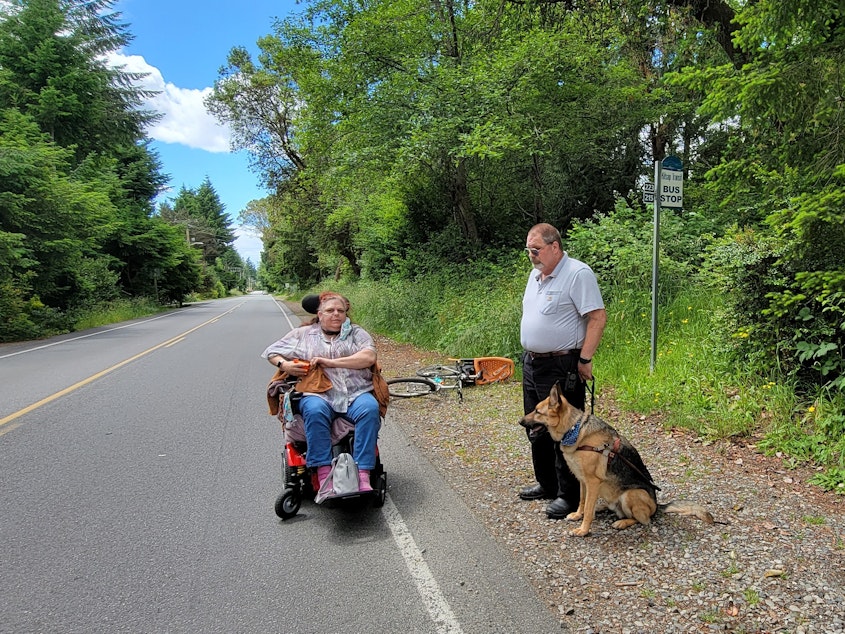Report spotlights unsung mobility experts in WA: People with disabilities

Muddy paths instead of sidewalks, unreliable transit that takes hours with connecting buses, and curbs that force wheelchair users out into traffic. These are just some of the barriers to mobility cited in a new report by Disability Rights Washington.
The report’s authors interviewed 125 people with disabilities in Washington State who get around without a car. They concluded, “It's not an exaggeration to say almost everyone we interviewed expressed a sense that their mobility needs are afterthoughts and that they are substantially left out of the processes that shape transportation systems.”
Anna Zivarts directs the Disability Mobility Initiative. She said the two biggest issues people described were a lack of sidewalks and a lack of reliable transit.
“The goal of the initiative is to empower non-drivers — people who are disabled or too old to drive or just don’t have access to a car for whatever reason — to speak up and have our mobility needs met in our state,” she said.
Her group estimates that non-drivers (including children) make up a quarter of the state’s population. Zivarts said they will use the report’s findings to press for more pedestrian and transit improvements that benefit all users. The report includes dozens of recommendations for elected officials and transit providers.
Disability Rights Washington is also asking people who normally drive – especially elected officials — to sign up for a Week Without Driving Oct. 22-29.
Sponsored
Zivarts said participants may be surprised by the effort involved. “One is the planning, like the pre-planning that it takes to get somewhere on transit or walking or rolling,” she said. “Driving directions, you know, Google maps or Apple maps, it’s pretty smooth – you put it in, you go. Transit, it’s not so simple.” The group is offering to partner participants with non-drivers in their communities to provide technical assistance.
Zivarts said another goal behind the report was to gather the expertise of disabled people who use transit full-time, and to help them feel less alone.
“I was talking to someone on Mercer Island – she thinks she’s the only blind person there who wants accessible pedestrian signals, and I’m like, ‘I guarantee there are other low-vision and blind folks on Mercer Island!’ But because folks are often trapped at home, or isolated, or there isn’t a good way to connect across disabilities or across communities, a big part of our goal is to allow people to have that connection and to feel like together we can advocate for this change.”




